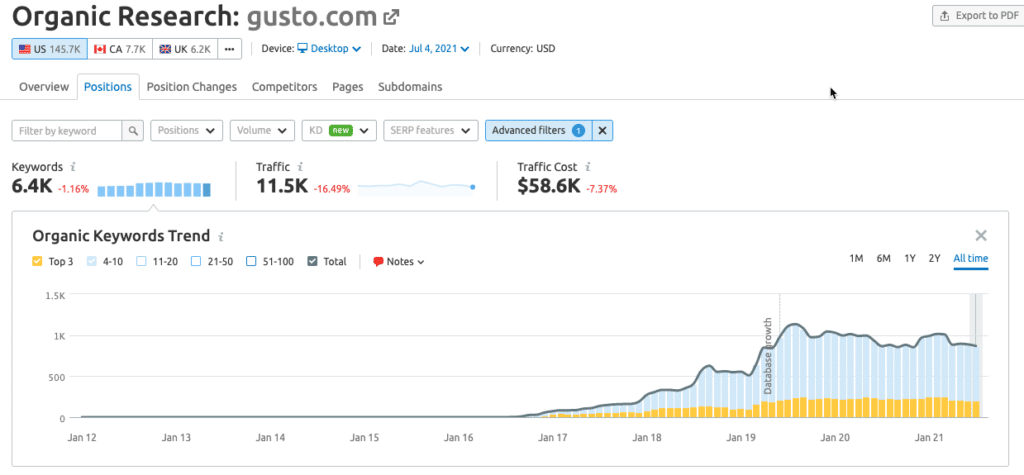Go for the Gusto and Build a Brand Moat
Here we will share a three-step process for getting started on building an encyclopedia of information for your ideal customer.

Category: Search Engine Optimization | Tags: avalanche email, Content Strategy, seo analogy
Today I’m going to show you how to build a moat and become the category leader by developing a company encyclopedia.
Gusto is software that helps you manage payroll, benefits, and HR.
Over the last few years, they’ve been heavily investing in their blog; developing really helpful information for their target buyer.
Below is a screenshot of the organic traffic they are getting just to their “health insurance” category of their blog:
- 11.5k estimate monthly visitors from search engines.
- A traffic cost (if they were to pay for it in ads) of $58,600 / month.
- 868 different keywords on the first page of Google.

Gusto is building an “SEO Moat” on topics that matter to their customer (no matter where their customer is in their HR/Payroll/Benefits software buying journey).
And that’s the key to creating content that builds a brand that competitors struggle to compete with.
- Their resources help people.
- Helping people builds trust in your brand.
- Your brand becomes almost synonymous with the benefit and experience of your product/service (examples: Kleenex, Apple, Netflix).
Information-seeking people today are your customers tomorrow. But, you’ve got to invest in helping them and the best way to do that is with publicly accessible information, i.e your blog content.
Create the encyclopedia of your business for your customer.
The best way to start building your moat with blog content is to develop a content strategy. A good strategy looks like a spreadsheet that clearly defines what content to create when and why. The final output of that will be that you eventually build an encyclopedia for your customer.
Here’s a three-step process for getting started:
- Do thorough keyword research with SEMRush. Build a huge list of informational and transactional keywords.
- Use the keywords and current SERPs (search engine results pages) to organize keywords into future topics.
- Prioritize those topics (groups of validated keywords) into pieces of content for your website.
That’s it. Need some help getting started? Reach out to us with your questions.
Share this article:
The Avalanche Email: Fun. Simple. Educational. No Selling.
Learn Result-focused SEO & Content
Join over 2,272+ others who get one email every Wednesday with simple instructions on how to get more website traffic and leads through SEO and content marketing. (Learn more about the email)
Share this article:





